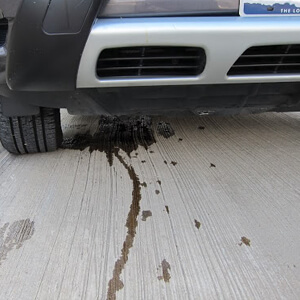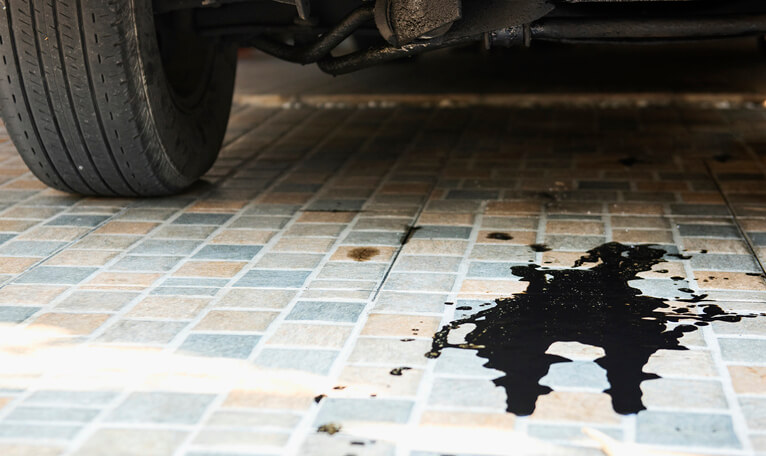To repair oil leaks, identify the source and seal with appropriate product or parts. Regular maintenance prevents leaks.
Dealing with oil leaks is a common issue that many vehicle owners face. Whether it’s from a worn-out gasket, a loose oil filter, or a crack in the oil pan, leaks can lead to serious engine damage if not addressed promptly.
We will explore the various causes of oil leaks in vehicles and provide practical tips on how to repair them effectively. By following these steps, you can ensure your car stays in top condition and avoid costly repairs in the long run.
Identifying Oil Leak Issues
Identifying oil leak issues is the first step in repairing oil leaks. One way to locate the source of the leak is by inspecting the area around the oil pan, as this is a common location for leaks to occur. Look for any signs of oil drips or puddles under the vehicle. Another method is to check the oil filter and the gasket between the filter and the engine. Leaks in this area are often caused by a loose or damaged gasket.
Determining the type of oil leak is also important in the repair process. Engine oil leaks can be identified by their dark color and distinctive smell. Transmission fluid leaks, on the other hand, are often reddish in color. Power steering fluid and brake fluid leaks can be identified by their viscosity and color.

Credit: myeuropro.com
Common Causes Of Oil Leaks
- Worn Gaskets and Seals: Over time, gaskets and seals deteriorate, leading to leaks.
- Loose or Damaged Oil Drain Plugs: Check for loose plugs or damage causing leaks.
Tools And Materials Needed
| Tools and Materials Needed |
|---|
|
Credit: www.powerandcables.com
Step-by-step Repair Process
Repairing oil leaks is an important step in maintaining the health and performance of your vehicle. Following a step-by-step process can help you effectively address the issue. Before starting any repairs, it is crucial to prioritize preparation and take necessary safety measures.
Begin by thoroughly cleaning the engine to identify the exact location of the oil leak. Next, remove any obstacles that may hinder the repair process. It is advisable to wear gloves and safety goggles to protect yourself from potential hazards.
The next step involves replacing faulty gaskets and seals. These components are often the main culprits behind oil leaks. Make sure you source high-quality replacement parts and refer to your vehicle’s manual for guidance on their installation.
Inspect other potential areas where oil leaks may occur, such as the oil pan, valve covers, and oil filter. In case of any additional leaks, address them promptly to avoid further damage.
Preventive Maintenance Tips
Regularly checking oil levels is crucial to prevent oil leaks. By monitoring the oil level, you can detect any sudden drops which may indicate a leak. Additionally, using a high-quality engine oil is essential for preventing leaks. Quality oil can help maintain the integrity of the engine’s components, reducing the likelihood of leaks. Remember to adhere to the manufacturer’s recommendations for oil type and change intervals to ensure optimal engine health.

Credit: www.dinggo.com.au
Frequently Asked Questions On How To Repair Oil Leaks
How Much Does It Cost To Fix An Oil Leak?
The cost to fix an oil leak can range from $150 to $1,000 depending on the severity and location of the leak. It can be more expensive if parts need to be replaced. Regular maintenance can help prevent costly repairs.
Can I Fix An Oil Leak Myself?
Yes, it is possible to fix an oil leak on your own.
What Can I Put In Oil To Stop Leaks?
Add a stop leak additive formulated for engines to your oil to prevent leaks effectively.
How Much Does Oil Leak Repair Cost?
Oil leak repair costs vary depending on the extent of the damage. On average, it can range from $150 to $500.
Conclusion
Repairing oil leaks can be a relatively straightforward process if you follow the necessary steps. By identifying the source of the leak, selecting the appropriate tools and materials, and carefully sealing the affected area, you can prevent further damage to your vehicle and ensure its optimal performance.
Remember to regularly check for leaks and address them promptly to avoid costly repairs down the line. Following these guidelines will help you handle oil leaks efficiently and maintain the overall health of your car.
{ “@context”: “https://schema.org”, “@type”: “FAQPage”, “mainEntity”: [ { “@type”: “Question”, “name”: “How much does it cost to fix an oil leak?”, “acceptedAnswer”: { “@type”: “Answer”, “text”: “The cost to fix an oil leak can range from $150 to $1,000 depending on the severity and location of the leak. It can be more expensive if parts need to be replaced. Regular maintenance can help prevent costly repairs.” } } , { “@type”: “Question”, “name”: “Can I fix an oil leak myself?”, “acceptedAnswer”: { “@type”: “Answer”, “text”: “Yes, it is possible to fix an oil leak on your own.” } } , { “@type”: “Question”, “name”: “What can I put in oil to stop leaks?”, “acceptedAnswer”: { “@type”: “Answer”, “text”: “Add a stop leak additive formulated for engines to your oil to prevent leaks effectively.” } } , { “@type”: “Question”, “name”: “How much does oil leak repair cost?”, “acceptedAnswer”: { “@type”: “Answer”, “text”: “Oil leak repair costs vary depending on the extent of the damage. On average, it can range from $150 to $500.” } } ] }